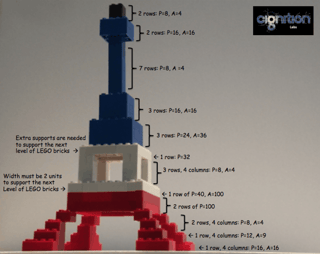
1. LEGO Eiffel Tower
Math Skills Practiced:
- Mental calculations (addition, subtraction, multiplication, division)
- Practice calculating area and perimeter and visually connecting similarities and differences between the two
- Understanding physical applications of math and translating abstract math concepts into concrete building designs
Other Skills that Boost Cognitive Function and IQ:
- Visuospatial reasoning – using visuospatial representations and clues to solve a cognitive puzzle and create a design
- Visuospatial abstraction – mentally rotating and imagining objects that take up space
Description:
Children who already enjoy playing with LEGO may find this math exercise intrinsically rewarding. The goal of this activity is to make the Eiffel Tower using the visual aids provided and clues on the photo.
A single LEGO unit
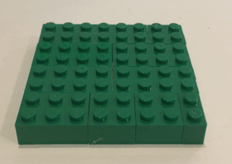
P = perimeter in LEGO units = 32
A = area in LEGO units = 64
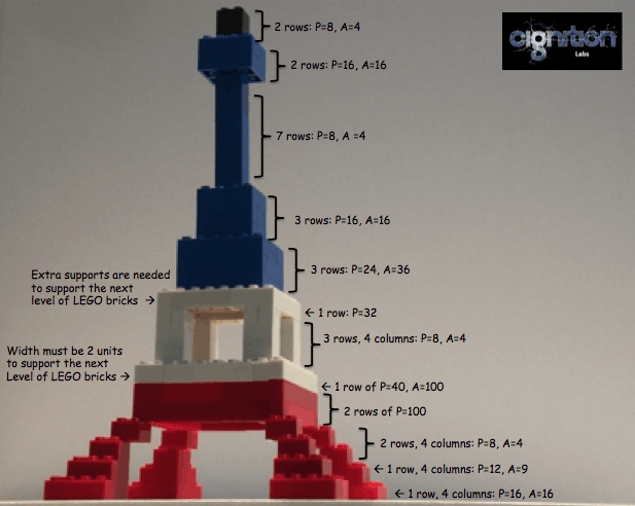
2. Stocks Activity
Math Skills Practiced:
- Mental calculations (addition, subtraction, multiplication, division)
- Working with decimals
- Using and maintaining charts
Preparation for other Subjects:
- Business and finance
- Investing and money sense
- Depending on how engaged children get in the activity, they may wish to research the stocks they are purchasing and find out more about the company’s practices and previous performance, how well they manage the company, and keep up with news about factors that may impact the price of the stocks. This would further increase their understanding of world business and finance, and foster an interest in trading, while exercising their math skills in a fun and engaging way.
Other Skills that Boost Cognitive Function and IQ:
- Estimations
- Predictions based on gathered knowledge
- Probability-based decision making
Description:
Children can “borrow” $100 or $1000 from their parents to purchase stocks. They would not actually receive that money since they are pretending to buy the stocks, but they would get money from their parents if the price of the stock increases or have to pay their parents if the price of the stock decreases. Parents can adjust the initial loan amount depending on how much they are willing to pay when/if the stock prices increase. Ideally, they would choose the ones that they are interested, for example:
- Disney, NYSE:DIS
- Tesla, NASDAQ:TSLA
- Netflix, NASDAQ:NFLX
- Microsoft, NASDAQ:MSFT
- Hasbro, NASDAQ:HAS
Children can use the following chart (right-click to save/print) to keep track of price increases and decreases and make a decision about when it is time to sell and move to a different stock.
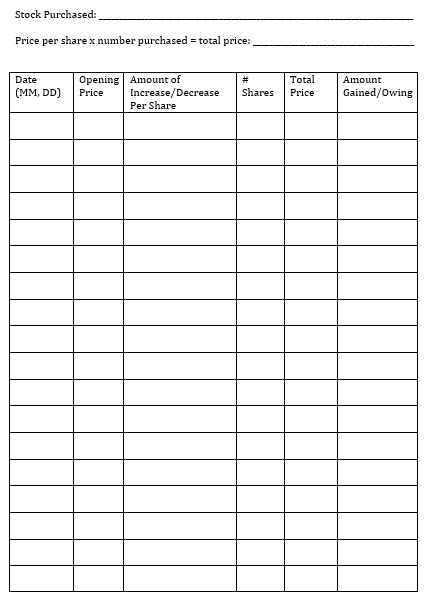
Instructions: Print 1 copy per stock “purchased”.
3. Growing Plants Under Different Conditions
Math Skills Practiced:
- Accurate measurements using a ruler
- Working with decimals
- Using and maintaining charts for data collection purposes
- Creating line graphs based on data and interpreting findings
- Understanding real-life applications of math and experiments
Preparation for other Subjects:
- Biology – understanding factors that impact plant growth
Other Skills that Boost Cognitive Function and IQ:
- Developing and testing hypotheses
Description:
As a combined biology and mathematical project children can run an experiment to see how different conditions can impact plant growth.
Plants need soil, water, and sunlight to grow. You can help demonstrate this in a fun activity that that allows children to practice their math skills (charting and graphing).
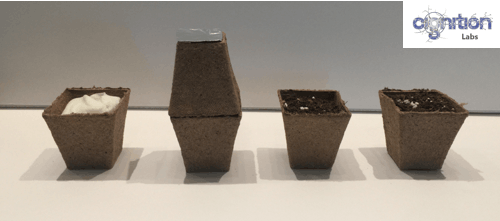
Plant seeds in four cups:
- One without soil (can use wet paper towels)
- One without sunlight
- One without water
- One that includes all three
You can plant any seeds but wheat, barley, or lentils grow the fastest for more immediate results.
It is best to plant two or three seeds in each cup to make sure that one will grow. For the measurements you can use the tallest. (Please note that averages are not being used here because if one or two or the three seeds do not grow for reasons out of our control the average would underestimate plant growth.)
Children can track the growth of each condition on a daily basis (i.e., height above soil/paper towel), using the following chart (right-click to save/print) and graph the results on the second chart below. (they can choose a different color for each condition and mark them on the legend). If they miss a day of measurement, they can leave it empty on the chart and graph.
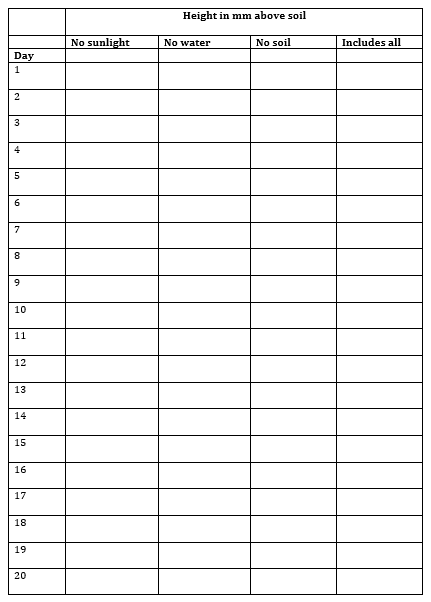
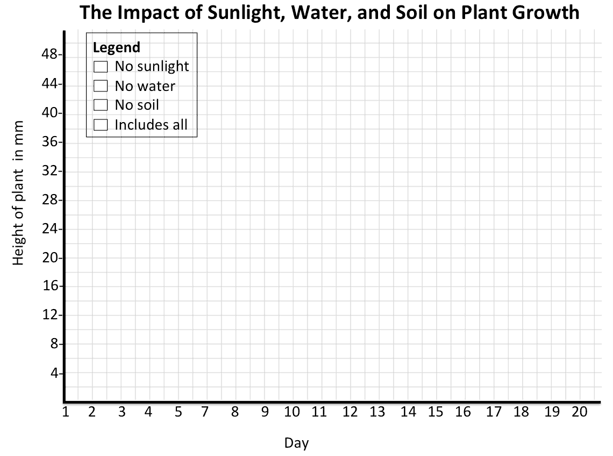
Instructions: Print one copy of each of the files above (right-click to save/print).
4. Fruit Water Content
Math Skills Practiced:
- Mental calculations (addition, multiplication)
- Calculating volume of different shapes (cylinders, cubes, rectangles, spheres)
- Calculating weight (if a kitchen scale is available)
- Calculating averages
- Working with decimals
- Using and maintaining charts for data collection purposes
- Creating bar graphs based on data and interpreting findings
- Understanding real-life applications of math in their environment and the purpose of scientific experiments
Preparation for other Subjects:
- Biology – understanding water content in different fruits and vegetables and conditions that impact water loss and dehydration (e.g., temperature)
- Biology – understanding the role of water in bacterial growth and food spoilage
Other Skills that Boost Cognitive Function and IQ:
- Forming and testing hypotheses
Description:
In these experiments children can learn about water content in fruits and vegetables, which factors contribute to water loss (such as temperature), and how water context can impact bacterial growth and food spoilage.
Experiment 1: Fruit and Vegetable Water Loss
If you have a kitchen scale, children can use it to measure the degree of water loss by measuring weight of fruits and vegetables over time. If you don’t have a kitchen scale, you can skip the weight measurements and measure size of the fruits.
Steps:
- Have children choose two or more fruits or vegetables that can easily be sliced into shapes for which they can calculate the volume (e.g., cylinders, cubes, rectangular prisms).
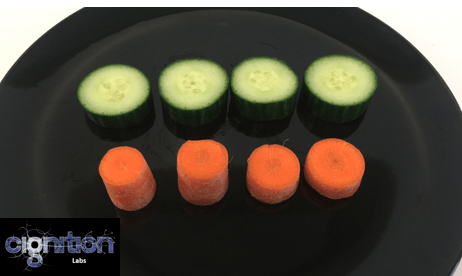
- Ask children to place four of each of the selected items in a plate and measure their length, width, and height. In the case of circular objects (e.g., cylinders), radius or diameter can be measured. Before taking measurements, ask children to use a marker to indicate which points they will be measuring so that the same points are measured each day. Have children record the measurements in Chart 1: Daily Measurements for Each Piece for each item and calculate the volume. If it is too difficult to mark the fruit with a marker, you can cut a thin line through the fruit (just enough to show you where to take your measurements each day).
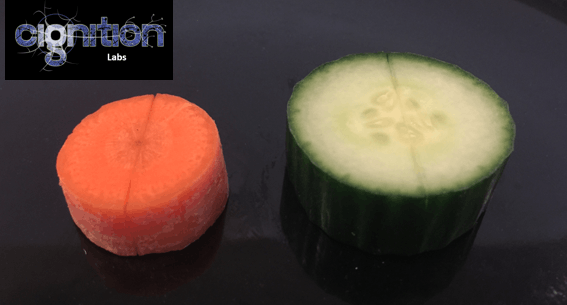
- Children can continue the recordings daily and calculate percentage change from Day 1 for each of the measurements. Daily decreases are converted to percentages to allow for a direct comparison of all fruits and vegetables in the experiment. (In other words, a 2 mm decrease in a large piece would not be comparable to a 2 mm decrease in a small piece due to their size differences).
- Have children calculate the average percentage change for volume of each fruit or vegetable category, and mark that on Chart 2: Daily Calculations of Weight and Volume for All Pieces and Graph 1: Water Loss Volume.
- If a kitchen scale is available, children can place each fruits or vegetables on the scale and record its weight. They can then calculate the percent change from day one and average percent change for each fruit and vegetable category daily. If you do not have a kitchen scale, you can mark N/A in the columns for “Weight”. Mark water loss according to weight in Graph 2: Water Loss Weight.
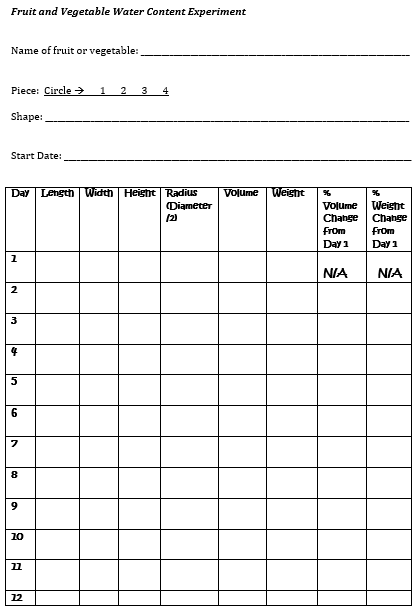
Chart 1: Daily Measurements for Each Piece
Instructions: Print 4 copies of this sheet for each type of fruit or vegetable (right-click to save/print)
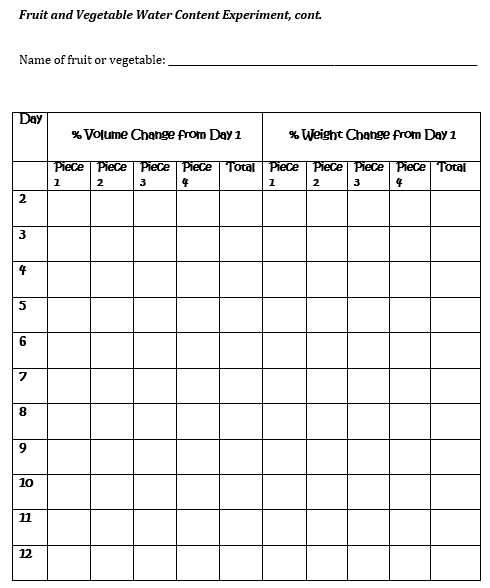
Chart 2: Daily Calculations of Weight and Volume for All Pieces
Instructions: Print 1 copy of this sheet for each type of fruit or vegetable (right-click to save/print)
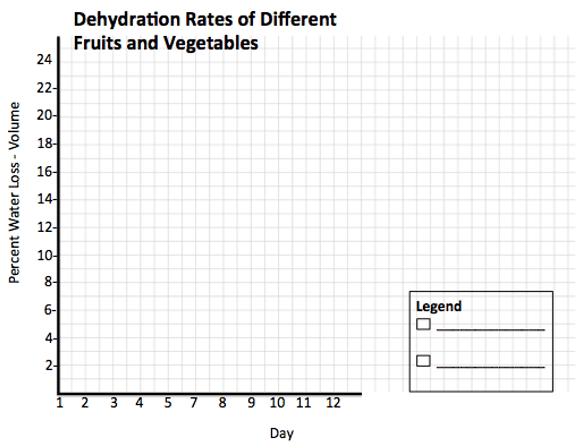
Graph 1: Fruit and Water Content Experiment – Water Loss Volume.
Instructions: Print 1 copy of this sheet (right-click to save/print).
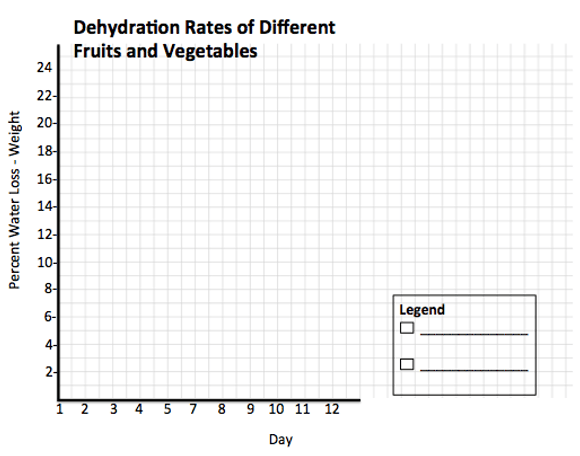
Graph 2: Fruit and Water Content Experiment – Water Loss Weight.
Instructions: Print 1 copy of this sheet only if you will be measuring weight (right-click to save/print).
5. Water and colours

Math Skills Practiced:
- Ratios and proportions
Preparation for other Subjects:
- A better understanding of colours can help with certain topics in physics as well as art
Other Skills that Boost Cognitive Function and IQ:
- Executive functions are exercised as children have to think about and plan out ways of deriving new colours based on combinations of the ones they are familiar with
Description:
Mixing colours is a great way to develop an understanding of ratios and proportions!
Materials required:
- At least 15 cups (more is better), preferably clear
- Food dyes: Red, blue, and yellow
Stem:
- Science – colour mixing
- Math – ratios and proportions
Description:
Mixing food colours can be a fun and educational activity. Begin with three primary colours: red, blue, and yellow.
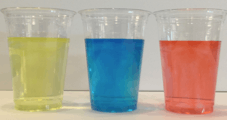
Children can place one drop of each into a clear cup filled with water. Follow the ratios presented on the following links and fill in the blanks to find out how many different shades can be produced by using different ratios. Which ones are the same?
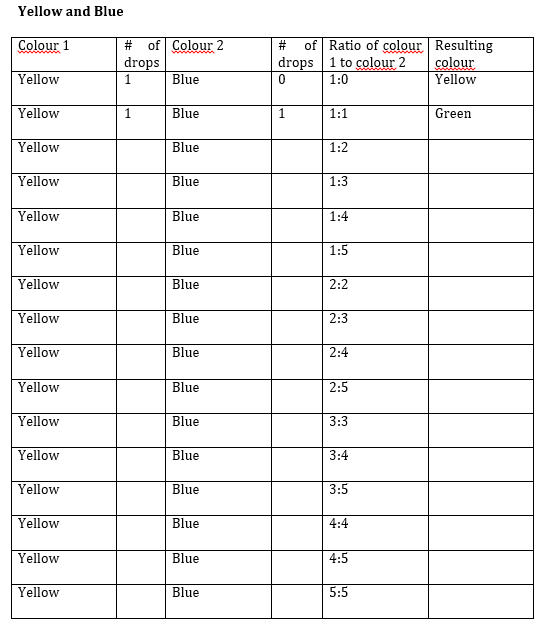
Yellow and Blue:
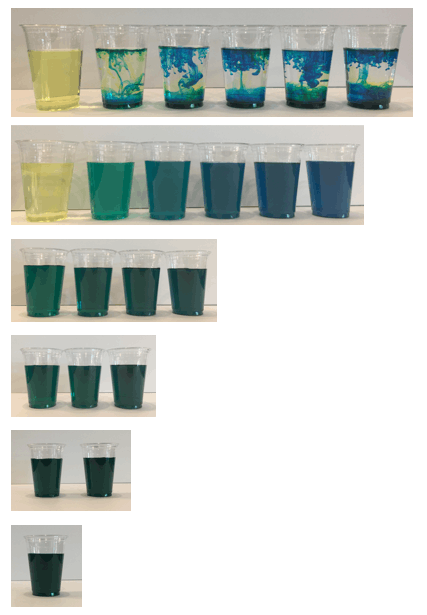
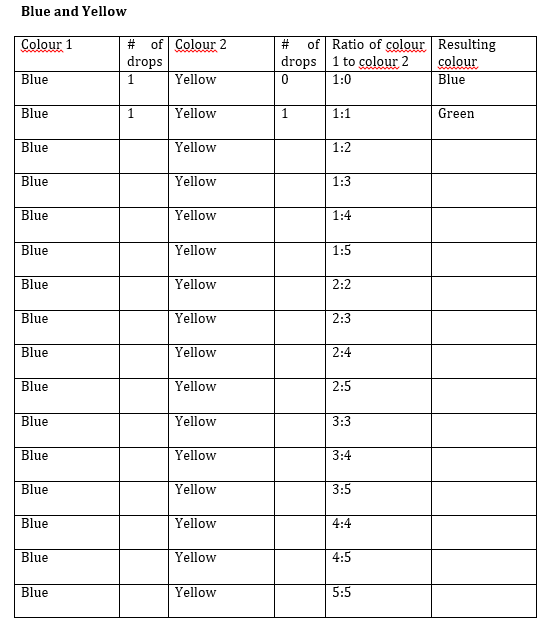
Blue and Yellow:
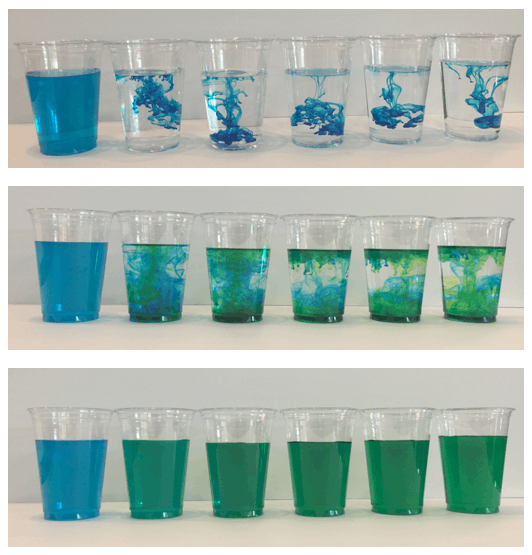
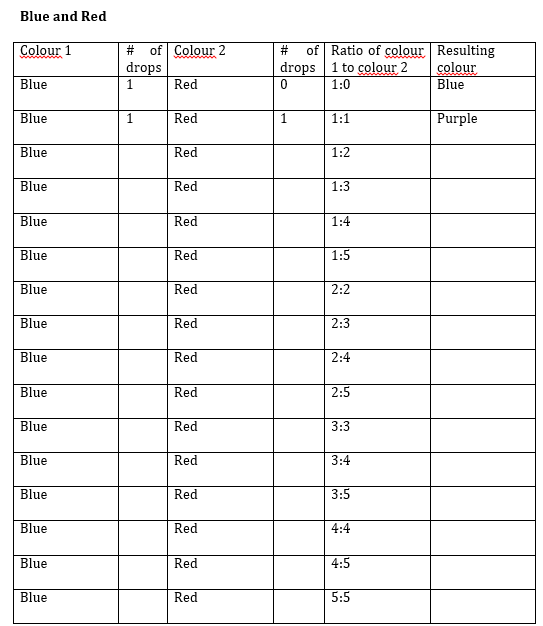
Blue and Red:
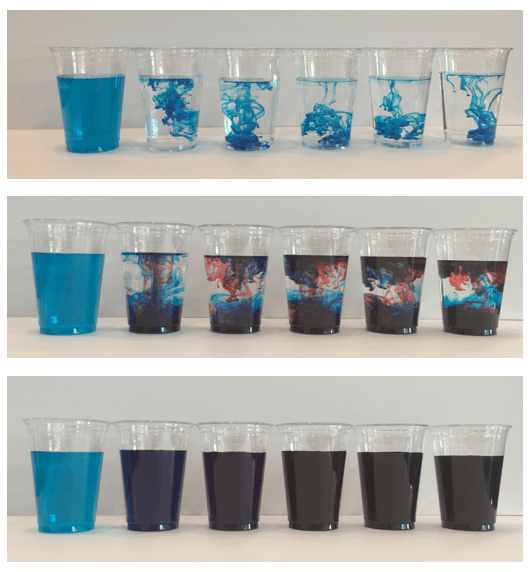
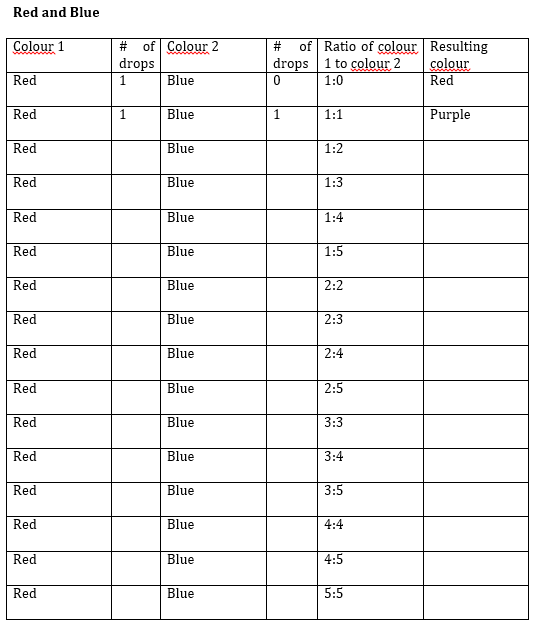
Red and Yellow:
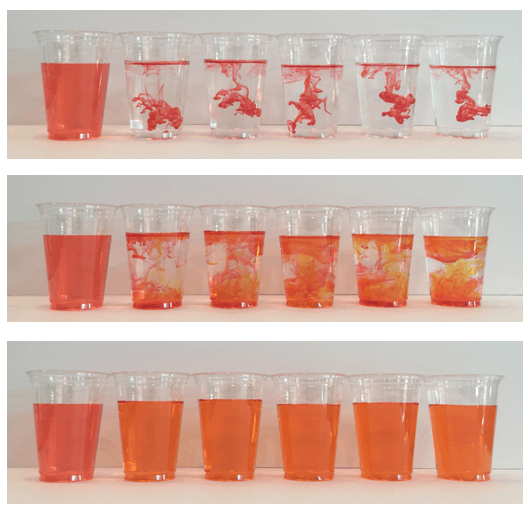
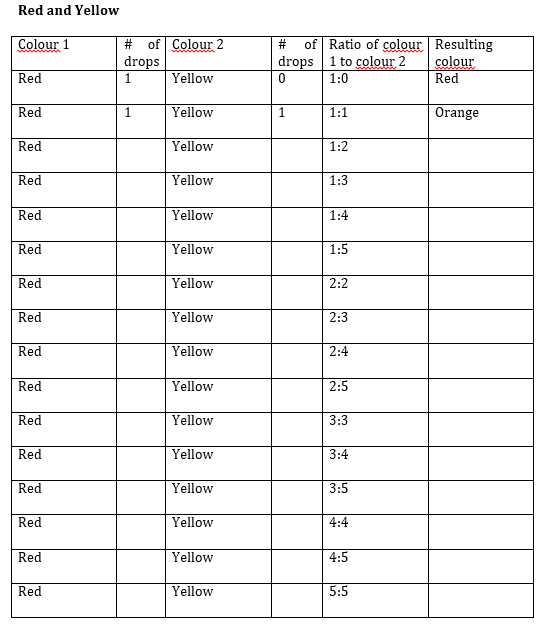
Yellow and Red:
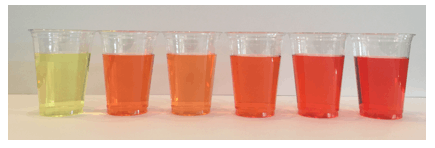
6. Paper Airplanes
Math Skills Practiced:
- Ratios and proportions
- Recording data
- Calculating average
Preparation for other Subjects:
- Physics
Other Skills that Boost Cognitive Function and IQ:
- Creative thinking about design
- Incorporating elements of physics and math to improve design
- Troubleshooting and problem solving
Description:
Building paper airplanes can be a great STEM activity that encourages students to think about how elements of physics integrate with math through a project with real-life applications.
This activity is best with two or more participants, but can also be completed by a single individual. The purpose of the game is to build a paper airplane that:
- Goes the furthest
- Can stay in the air for the longest amount of time
Please note that a single airplane does not need to meet both of these criteria and two separate planes can be built to accomplish this.
A major goal of this project is to learn through exploration and iterations while recording data. Students can begin with a simple paper airplane and measure distance traveled and flight time, and begin to make modifications. It is important to record these measurements over at least three throws and take the average since the force and angle of the thrust can vary and taking an average will provide a better estimate of which plane is the the best for each category. Students can number their planes or come up with unique names for each iteration to make keep track of data and make the game more fun.
There are four forces that act on the flight of paper airplanes:
- Thrust – This force propels the plane forward. Thrust will depend on how the plane is thrown, rather than the way that the plane is built.
- Air drag – This force opposes thrust. It is a good idea to decrease drag by making the plane as streamlined as possible.
- Lift – This force determines how high it can go. Increasing the surface area of the wings can help increase lift.
- Gravity – Moving the centre of gravity forward can help with distance travelled.
Here are a few inspirational videos to get students started.
This video is from John Collins a world expert on paper airplanes:
Tips on making paper airplanes:
7. Budget
Parents can encourage students to create a budget. Items can be based on a daily, weekly, or monthly basis to encourage mental computations (e.g., $3.75/day for a smoothie three times a week, two pairs of jeans at $65/pair, etc.). Students can also create charts or graphs to display how well they met their budgets each day or each weak.
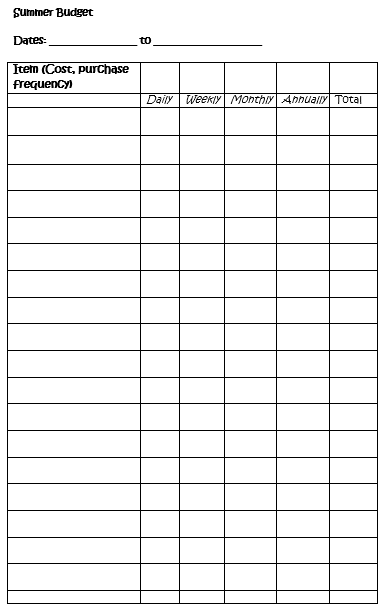
Budget Template:

Tips:
- To get a more accurate monthly estimate, divide weekly prices by 7 and multiply by 30 (rather than multiplying price per week by 4).
- Entering an annual price is optional.
- Totaling the price will depend on when the budget is started and the range of time set by the child.
8. Geometric Bubbles
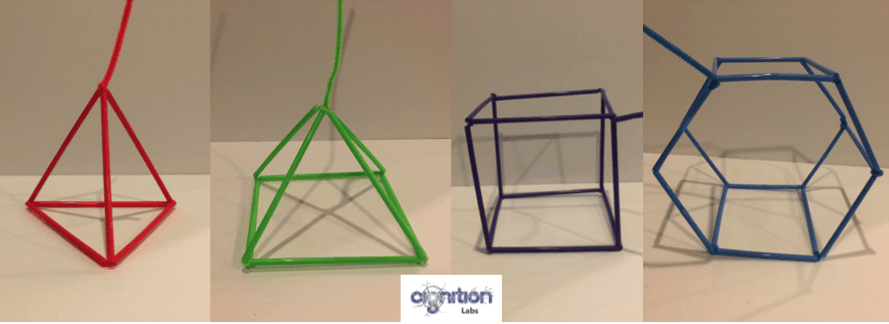
Math Skills Practiced:
- Geometry
Other Skills that Boost Cognitive Function and IQ:
- Visuospatial reasoning – designing a shape based on visuospatial guidelines
- Visuospatial abstraction – mentally rotating and imagining objects that take up space
Description:
A fun activity is to create geometrically bubble wands using straws and pipe cleaners. Children can experiment with different ways to create these shapes and other shapes and dip them in bubble solution to see what kind of bubbles result.
9. Sugar Densities
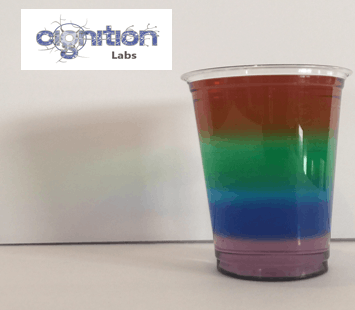
Math Skills Practiced:
- Ratios and proportions
Preparation for other Subjects:
- A great introduction to densities for science class
- Reinforcement of combining primary colors to make secondary and tertiary colors
Description:
This fun activity can help introduce proportions to children while introducing the scientific concept of density. Children can make a rainbow of colors by stacking colored water with different densities based on sugar concentration.
Step 1: Begin by adding food coloring to water to create a rainbow of colors.
Tip: use the same amount of water for each cup (60 ml is sufficient).
Colors:
Red
Orange = 1 red : 1 yellow
Yellow
Green = 1 blue : 1 yellow
Blue
Indigo = 2 blue: 1 red
Purple = 1 blue : 1 red
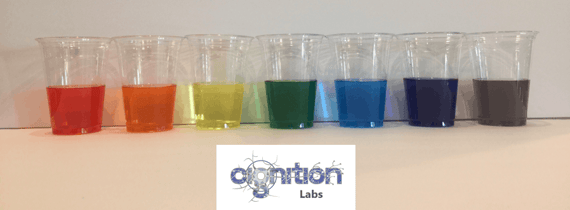
Step 2: Add the following proportions of sugar into the cups and mix well. Tip: hot water helps the sugar dissolve easier.
Red = 1 tbsp
Orange = 2 tbsp
Yellow = 3 tbsp
Green = 4 tbsp
Blue = 5 tbsp
Indigo = 6 tbsp
Purple = 7 tbsp
You can change the amount of sugar in the cups as long as you maintain the same ratio.
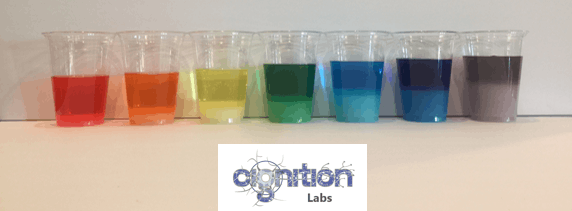
Step 3: Once the sugar has dissolved, use a turkey baster or a syringe to slowly layer the colored water. Begin with the most dense and move your way up to the least dense.
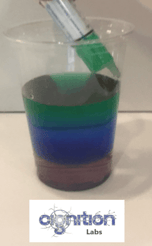
Once you have layered all the colors, you should have a rainbow!
.png?width=355&name=sugardensimg%20(2).png)
10. Musical Water Cups
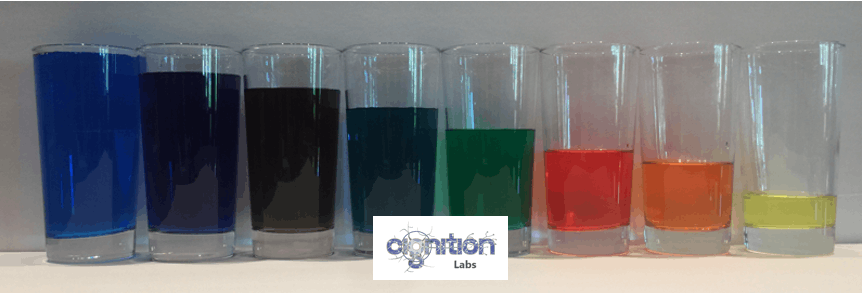
Math Skills Practiced:
- Ratios and Proportions
Preparation for other Subjects:
- A fun way to introduce relationships between math, space, and sound
- Mixing primary colours to get secondary and tertiary colours
Other Skills that Boost Cognitive Function and IQ:
- Visuospatial reasoning – visual demonstration of how different quantities in space can lead to varying outcomes
- Visuospatial working memory – keeping track of and manipulating visuospatial information
Description:
Using different proportions of water in a cup, you can make an instrument that produces different pitches. You can also label the pitches to demonstrate the relationships between music and math.
A fun working memory exercise would be to play a tune and have your children play it backwards engaging their visuospatial and auditory working memory. Try engaging each working memory system separately by having them close their eyes or cover their ears as you play the tune.